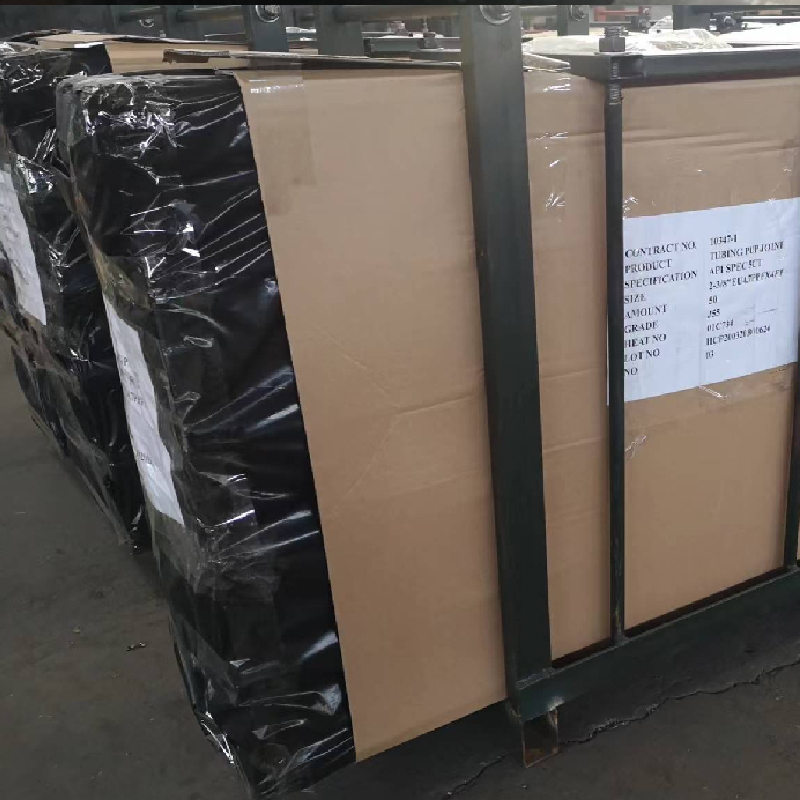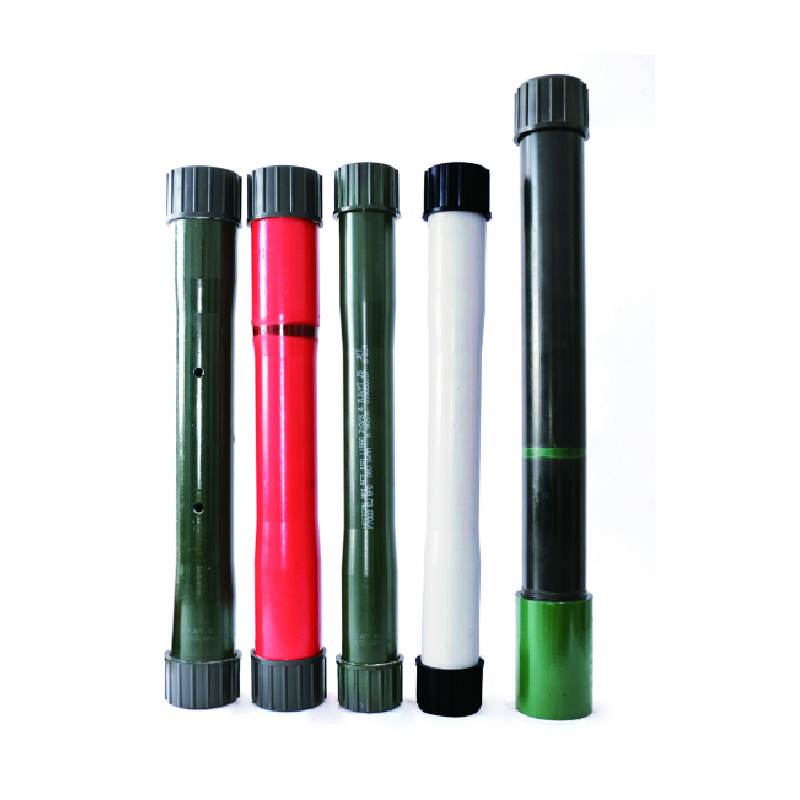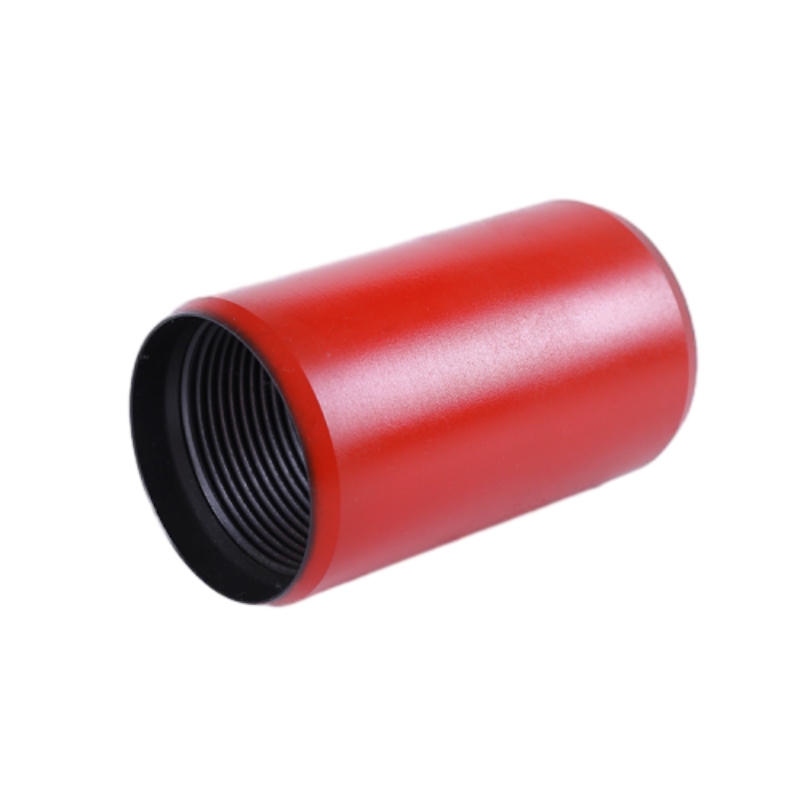API Certified Pup Joints for Casing & Drill Pipe
In the complex world of Oil Country Tubular Goods (OCTG), precision and reliability are not just goals—they are imperatives. Among the most critical components ensuring operational flexibility and integrity in the drill string is the pup joint. These short sections of casing, tubing, or drill pipe are indispensable for adjusting the length of tubular strings to exact specifications, a fundamental requirement for successful drilling, completion, and workover operations. This guide provides an exhaustive analysis of the pup joint, with a specialized focus on the casing pup joint and pup joint drill pipe, covering everything from industry trends and technical specifications to manufacturing excellence and real-world applications.
Industry Trends: The Evolving Role of the Pup Joint in Modern Drilling
The global oil and gas industry is continuously pushing boundaries, with deeper wells, more complex horizontal drilling, and operations in increasingly harsh environments. This evolution directly impacts the demand for high-quality, durable components like the pup joint. Current market analysis reveals several key trends:
- Demand for High-Grade Materials: As wells become deeper and encounter higher pressures and more corrosive elements (like H2S), the demand for **pup joints** made from high-strength, corrosion-resistant alloys (CRA) such as L80, C90, T95, and P110 is surging. A 2023 market report by Allied Market Research highlights a projected CAGR of 4.5% in the OCTG market, driven largely by the need for premium grade materials.
- Precision Engineering: The rise of automated drilling systems and smart well completions requires components with extremely tight tolerances. A modern pup joint drill pipe must offer perfect thread alignment and dimensional accuracy to prevent connection failures, which can lead to catastrophic downtime.
- Supply Chain Optimization: Operators are increasingly looking for manufacturers who can provide reliable, on-demand supply and customized solutions. This includes offering non-standard lengths and specialized thread types for specific wellbore geometries, making a versatile manufacturer of the pup joint a critical partner.

Technical Deep Dive: Casing Pup Joint Specifications and Parameters
Understanding the technical parameters of a casing pup joint is essential for proper selection and deployment. These components are not merely "short pipes"; they are engineered to the same exacting standards as the full-length casing they complement. The primary standard governing their manufacture is API 5CT (Specification for Casing and Tubing).
General Pup Joint Parameter Overview
The table below provides a general overview of common specifications for various types of **pup joints**, including casing, tubing, and drill pipe varieties.
| Parameter | Casing Pup Joint | Tubing Pup Joint | Drill Pipe Pup Joint |
|---|---|---|---|
| Standard Lengths | 2, 4, 6, 8, 10, 12 ft (Custom available) | 2, 3, 4, 6, 8, 10, 12 ft | 5, 10, 15, 20 ft |
| Outer Diameter (OD) | 4 1/2" to 20" | 1.9" to 4 1/2" | 2 3/8" to 6 5/8" |
| Primary Standard | API 5CT | API 5CT | API 5DP |
| Common Steel Grades | J55, K55, N80, L80, C90, T95, P110, Q125 | J55, N80, L80, P110 | E75, X95, G105, S135 |
| Common Thread Types | STC, LTC, BTC, Premium Connections | NUE, EUE, Premium Connections | NC, IF, FH, REG |
Data-Driven Performance Insights
Visualizing data helps to contextualize the importance of selecting the right pup joint. Here, we analyze key performance indicators for our Casing Pup Joint.
WJ Petroleum Casing Pup Joint vs. Industry Standard
Pup Joint Application Market Share
From Raw Steel to Flawless Connection: The Pup Joint Manufacturing Process
The creation of a superior pup joint is a meticulous process that combines advanced metallurgy with precision engineering. Each step is critical to ensure the final product can withstand the immense stresses of downhole environments. Our commitment to quality, compliant with ISO 9001 and API standards, is evident in our transparent manufacturing workflow.
Raw Material Selection & Inspection
It all begins with sourcing high-quality seamless steel pipes from certified mills. Each batch is subjected to rigorous spectral analysis and mechanical testing to verify its grade (e.g., J55, P110) and chemical composition, ensuring it meets or exceeds API 5CT specifications.
Heating & Forging (Upsetting)
The pipe ends are heated to a precise temperature and then forged (upset) to increase the wall thickness. This process, known as upsetting, provides the extra material needed for threading without compromising the pipe's body strength, a crucial step for a robust pup joint drill pipe.
Heat Treatment
Full-body quenching and tempering heat treatment normalizes the grain structure of the steel. This refines its mechanical properties, imparting the optimal balance of hardness, tensile strength, and impact resistance required for high-pressure, high-temperature (HPHT) wells.
Precision CNC Threading
This is where precision is paramount. Using state-of-the-art CNC lathes, threads (e.g., BTC, LTC, EUE, NUE) are cut to exact API 5B standards. Laser-guided profilometers verify every detail of the thread form, pitch, and taper for a perfect, leak-proof connection.
Rigorous Quality Control & Testing
Every single casing pup joint undergoes a battery of non-destructive tests (NDT), including Magnetic Particle Inspection (MPI) to detect surface cracks, Ultrasonic Testing (UT) for internal flaws, and hydrostatic pressure testing to certify its burst and collapse resistance.
Surface Treatment & Marking
Finally, the pup joints are phosphated or copper-plated for enhanced galling resistance and corrosion protection. They are then stenciled with all required information as per API standards: manufacturer, grade, size, thread type, and a unique serial number for full traceability.

Technical Advantages & Manufacturer Comparison
Not all pup joints are created equal. When selecting a supplier, it's vital to compare not just price, but the underlying technology, quality assurance, and service. WJ Petroleum's casing pup joint offers distinct advantages over standard market offerings.
| Feature | WJ Petroleum Casing Pup Joint | Generic/Standard Competitor |
|---|---|---|
| Material Certification | Full MTR (Material Test Report) traceability to the original heat lot. 100% API 5CT compliant sourcing. | Often limited traceability; may mix materials from uncertified sources. |
| Thread Machining | 5-axis CNC machining with laser-guided in-process inspection. Exceeds API 5B tolerance standards. | Older CNC or manual lathes, leading to higher tolerance variability. |
| Heat Treatment | Full-length, uniform quenching and tempering for consistent mechanical properties. | May use less effective normalizing or only end-area heat treatment. |
| NDT Inspection | 100% of products undergo MPI, UT, and hydrostatic testing. Reports provided. | Batch testing or statistical sampling, potentially missing individual defects. |
| Corrosion Resistance | Advanced phosphating process plus optional specialized coatings for H2S or CO2 environments. | Standard varnish or basic phosphate coating with limited effectiveness. |
| Customization | Offers any custom length up to 20 ft, specialized threads, and material grades upon request. | Limited to standard lengths and grades. |
Customization and Integrated Solutions
Standard solutions are rarely sufficient for today's complex well designs. Our engineering team thrives on collaboration, offering fully customized pup joint solutions. Whether you require a pup joint drill pipe with a proprietary premium connection, a casing pup joint with a specific chemical-resistant coating, or a non-standard length to land a packer at a precise depth, we provide end-to-end support.
Our process includes:
- Consultation: Understanding your specific well conditions, string design, and operational challenges.
- Engineering & Design: Using FEA (Finite Element Analysis) to model stress and performance for custom designs.
- Manufacturing: Leveraging our agile production line to create your bespoke pup joint.
- Logistics & Support: Ensuring timely delivery and providing full documentation and post-sale support.
Application Case Study: Solving a Complex Well Completion Challenge in the Permian Basin
Client: A major operator in the Permian Basin, USA.
Challenge: The client needed to set a packer and completion assembly at a precise depth in a highly deviated well. Standard casing string lengths were not achieving the required dimensional target, risking suboptimal reservoir stimulation. They required multiple, highly specific lengths of P110 grade casing pup joints with BTC threads, delivered on an expedited timeline.
Our Solution:
- WJ Petroleum's rapid response team confirmed the technical requirements within hours.
- We manufactured a custom package of pup joints in lengths of 3.7 ft, 5.2 ft, and 7.9 ft, all from a single, traceable heat lot of P110 steel.
- Each pup joint underwent expedited, documented NDT, and the threads were 100% gauged per API standards.
- The complete order was air-freighted to the client's site, arriving 48 hours ahead of schedule.
Result: The client successfully landed their completion assembly within 2 inches of the target depth. The high-quality threads ensured a fast, trouble-free makeup on the rig floor, saving an estimated 8 hours of rig time. This experience solidified our status as their trusted partner for critical tubular components.
Frequently Asked Questions (FAQ) about Pup Joints
Standard lengths for a casing pup joint and tubing pup joint are typically 2, 4, 6, 8, 10, and 12 feet. For a pup joint drill pipe, common lengths are 5, 10, and 15 feet. However, a key advantage of working with a specialized manufacturer like WJ Petroleum is the ability to order custom, non-standard lengths to meet exact string space-out requirements.
The choice of steel grade depends entirely on the well's conditions. J55/K55: These are general-purpose grades suitable for shallower wells with lower pressures and non-corrosive environments. They offer good ductility and are cost-effective. N80/L80: An intermediate grade, with L80 specifically designed for sour service (H2S) resistance. P110: This is a high-strength grade required for deep, high-pressure wells. It has a high yield strength but is more sensitive to corrosive elements unless specifically treated. Your drilling engineer will specify the required grade based on the casing design and anticipated well stresses.
NUE (Non-Upset End): The pipe is threaded directly on its original outer diameter. This results in a connection that is smaller in diameter than the pipe body. EUE (External Upset End): The pipe end is forged (upset) to have a thicker wall before threading. This makes the connection's outer diameter larger than the pipe body, but crucially, the joint is as strong or stronger than the pipe body itself. EUE is the more common and robust choice for most tubing applications.
Our quality assurance is multi-layered and complies with API Q1 standards. Every pup joint undergoes:
- Dimensional Inspection: Checking length, diameter, and wall thickness.
- Thread Inspection: Full profile gauging for all thread parameters.
- Non-Destructive Testing (NDT): Magnetic Particle Inspection (MPI) for surface flaws and Ultrasonic Testing (UT) for internal defects.
- Mechanical Testing: Tensile, hardness, and impact tests are performed on samples from each heat lot.
- Hydrostatic Testing: Each pup joint is pressure tested to API specifications to ensure it can withstand wellbore pressures.
Absolutely. Customization is one of our core strengths. We can manufacture a pup joint drill pipe or casing pup joint to any specified length to achieve precise space-out. We are also proficient in machining a wide range of premium and proprietary thread connections, in addition to standard API threads like NC, IF, BTC, and LTC. Contact our technical sales team to discuss your specific requirements.
The American Petroleum Institute (API) Specification 5CT is the global gold standard for casing and tubing. Compliance with API 5CT ensures that a pup joint meets strict requirements for material properties, chemical composition, tensile strength, dimensional tolerances, and inspection procedures. Purchasing an API 5CT certified product guarantees a level of quality, reliability, and interchangeability that is essential for safety and operational success in the oil and gas industry.
Proper handling is critical. Dropping or impacting a pup joint can create micro-fractures or damage threads, leading to failure downhole. Always use thread protectors during transport and storage. Store them on proper racks, not in direct contact with the ground, to prevent corrosion and contamination. Regular inspection of stored pup joints for rust or damage is a best practice before deployment.
References & Further Reading
To further enhance your understanding of OCTG specifications and best practices, we recommend consulting these authoritative sources:
- American Petroleum Institute (API): The primary source for standards. See API Specification 5CT for Casing and Tubing and API Specification 5B for Threading, Gauging, and Thread Inspection.
- Society of Petroleum Engineers (SPE): An excellent resource for technical papers and case studies on well design and completion. Visit the OnePetro library and search for "casing string design" or "tubular connections".
- Rigzone Community Forum: A platform for industry professionals to discuss practical challenges and solutions. The drilling and completions forum often contains valuable real-world insights on using components like the pup joint.
-
Tubing Crossover - API Compatible, Custom Sizes, In StockNewsNov.10,2025
-
Tubing Coupling | High-Strength, Leak-Proof Steel CouplingsNewsNov.10,2025
-
Wholesale API Threading Casing Coupling | API 5CT, Fast ShipNewsNov.10,2025
-
Pup Joint Supplier | API Certified, Custom, Quick ShipNewsNov.10,2025
-
Pup Joint Manufacturers | Precision Machined, Fast DeliveryNewsNov.10,2025
-
Tubing Coupling | Precision Steel, Leak-Proof, Fast DeliveryNewsNov.03,2025







